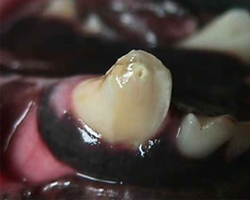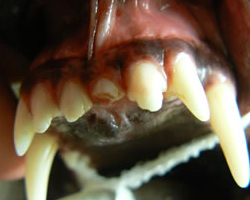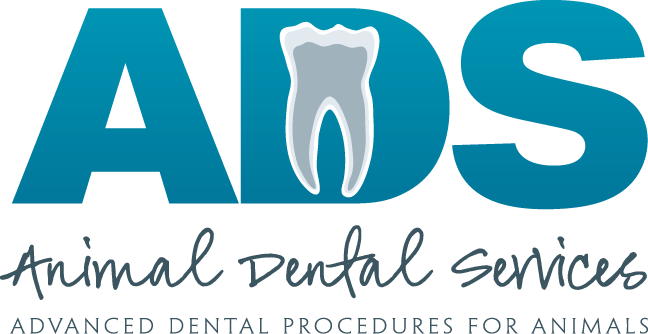Tooth Fractures

Fractured canine tooth

Fractured incisor tooth
Fractured teeth are a very common occurrence in dogs and cats, usually resulting from external trauma (e.g. when a tooth is hit by any hard object) or vigorously chewing on hard objects. The teeth most frequently broken are the canine (fang) teeth in the dog and the cat, and the upper fourth premolar teeth (the carnassial teeth – the large upper teeth in the back of the mouth) in dogs.
Dog Toys and Treats
Rubber toys, edible treats, and rawhide are usually fine for the teeth. In general, all chew toys should be resilient. Pet owners should either be able to bend the toy with their hands or depress it with a thumbnail. Unfortunately a lot of toys or treats are sold that are too hard for pets to play with without risk of injury to their teeth and mouth (e.g. antlers, bully sticks, etc.).
Tooth Traumas in Cats
Cats, as well as dogs, are susceptible to fractured teeth following trauma such as falling from heights, rough play, or being hit by a car. The result is often a tooth fracture that may or may not extend into the pulp canal within the tooth. The pulp canal is the chamber within a tooth that contains the pulp tissue, the blood vessels, and the nerve within the tooth. If the fracture does not enter the pulp canal, simply smoothing any rough enamel edges and sealing the tooth with a bonding agent will suffice in most cases. If the fracture opens the pulp canal, which houses the blood and nerve supply to the tooth, then the tooth will be acutely painful.
Most pets do not exhibit acute signs of pain at the onset of a fractured or broken tooth; they will often simply begin to use the other side of the mouth from which to chew. However, until the nerve within the broken tooth (if the pulp is exposed) dies, the tooth will be sensitive and the pet will react to touch or extreme temperature variations (hot or cold).
Please see our sections on Oral Surgery and Endodontics.
